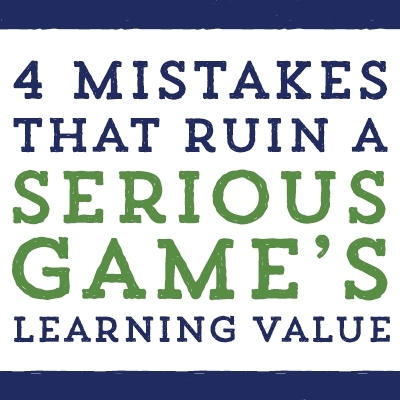Do These Limitations Impact The Effectiveness Of Your Serious Game Learning Strategy?
Serious games have become a valuable tool in the arsenal of instructors and L&D designers. They transform traditional learning into a fun and dynamic process, thus increasing learner engagement and achieving better learning outcomes. However, that doesn't mean serious games don't come with their own set of challenges and limitations. There are various factors you need to keep in mind when implementing serious games to ensure the success of this venture. In this article, we discuss 6 challenges of using serious games for learning and what to do to overcome them.
6 Pitfalls To Be Aware Of When Developing Serious Games
1. Development Costs
Using serious games for learning can turn out to be rather costly, especially when you consider shrinking L&D budgets. Although there is a wide variety of eLearning authoring tools available, a low price point usually indicates minimal room for customization. If you want your serious game to bring impactful results to your organization, personalizing it to fit your workforce's learning needs is of utmost importance. Some organizations opt to create their own serious games from scratch. This would incur additional expenses, as you would need to hire graphic designers, game designers, and programmers, among others. Paired with the delays or mistakes that might occur, leaving some wiggle room in your budget is the only way your serious game development project isn't cut short.
2. Technical Compatibility
For serious games to become widely used in your organization, they must be compatible with the devices your employees use. Therefore, during the development process, you must make sure the game works on different operational systems and devices, such as tablets, smartphones, and computers. In addition to that, most businesses choose to integrate their serious games into their Learning Management Systems to ensure direct collection of feedback and monitoring of various important metrics. Apart from the additional compatibility issues this process can cause, it might also require you to establish a separate team to oversee the data transfer and integration. This can be challenging for smaller businesses that can't afford the extra personnel that will take care of the technological aspects of implementing serious games.
3. Real-World Implementation
Serious games are often criticized for their limited applicability in the real world. At times, employees struggle to transfer in-game knowledge to their everyday work tasks, even if they have completed a large number of simulations in the serious game. For meaningful knowledge transfer, additional post-game reflection and implementation activities are essential. Moreover, it is hard to find content that is suitable for in-depth learning of complex issues. Sure, serious games are great for honing skills and reinforcing already established knowledge, but if your training program requires a deep understanding of a complex subject, they are not the best choice. For this reason, serious games can only achieve optimal learning results when combined with supplementary learning resources.
4. Employee Engagement
There is no doubt that traditional games can easily captivate one's attention for long periods of time. However, since serious games walk the line between learning and entertainment, engagement is a bigger challenge than one might think. You need to be very meticulous about the way you design the game so that the script, rewards, difficulty level, and key concepts all tie together seamlessly. If any of these are out of balance, the serious game might end up lacking the elements of motivation or interest. Or it might be too challenging and, as a result, discourage employees from completing it. Either way, failing to make serious games engaging directly impacts learning.
5. Measuring Learning Outcomes
All training methods and techniques require you to stay on top of various metrics to ensure maximum effectiveness. Although serious games can provide you with a plethora of data, their measurement and interpretation are not always as straightforward. Serious games deviate from traditional learning methods, as they require complex problem solving and decision making. These processes are subjective, which makes it hard for you to extract concrete data. As a result, you need to think your learning objectives through and carefully align them with specific metrics. Data privacy is another issue that should concern you because recording the actions of employees within the game could be perceived as a breach of privacy. Be transparent about the data you're collecting and the purposes they are used for.
6. Accessibility And Inclusivity Considerations
Most businesses are dynamic and diverse, employing people of different ages and backgrounds. Although that's great for innovation and productivity, it can make using a serious game for learning even more challenging. The L&D team must design the game to be accessible and easy to use by everyone, including those who are less tech-savvy. In addition to that, accessibility for employees with disabilities must be ensured to maintain a fair and inclusive workplace. This might require redesigning the game to include screen readers, incorporating settings that reduce visual clutter or adjust colors, and more. The positive effects on your workforce's development will certainly make the extra work that these accommodations demand worth it.
Don't Click "Quit" Just Yet! Serious Games Work!
Incorporating serious games in your organization's employee training program can be a valuable investment in the long run. Don't let the challenges and limitations that we discussed in this article convince you of the opposite. These are just a few hurdles you need to keep in mind when designing serious games to ensure you receive the promised benefits and results. By keeping these serious game implementation challenges in mind, you will be able to act proactively and be prepared for any issue that comes your way. This way, you will harness the full potential of serious games and give a significant boost to your staff's learning journey.








